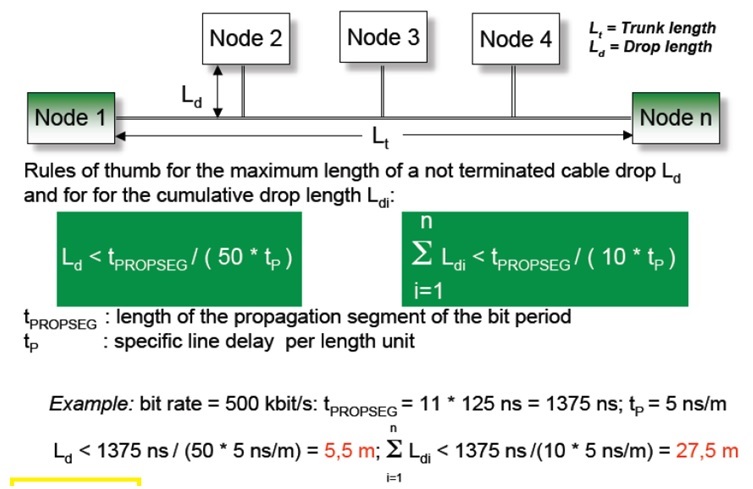Other Parts Discussed in Thread: TCAN1043
Dear team,
cal
There is a calculation for normal speed CAN bus to estimate the max cable length and total stub limitation. If designing CAN FD 2Mbps with TCAN1043, do we have a equation to estimation the limitation? The TCAN1043 spec only mentioned typical CAN recommended max 40m cable length and 0.3m stub length.
Could you clarify how to calculate the cable length and stub limitation for TCAN1043 CAN FD transceiver operates under 2Mbps with respect to CAN FD spec? Thanks!
Regards,
Alex


